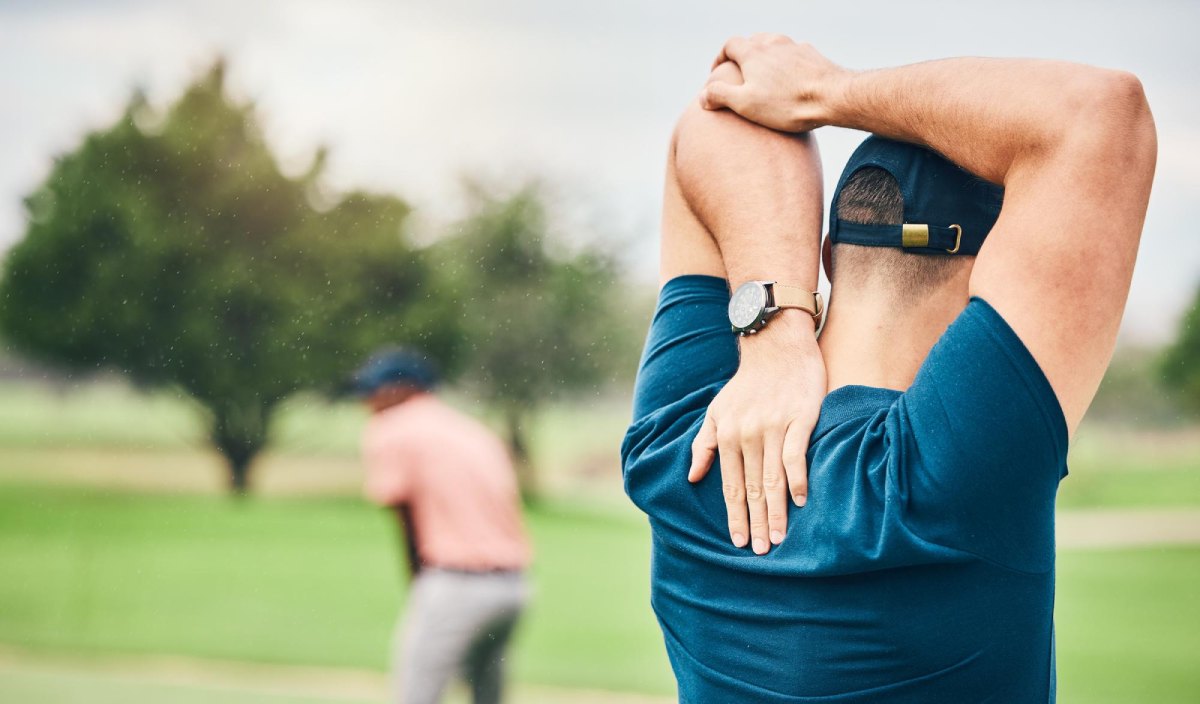Golfer’s elbow is surprisingly common—especially among people who do repetitive wrist or forearm movements. You don’t even need to be a golfer; anyone from gym-goers to office workers can experience this sharp, nagging inner-elbow pain. Many patients in India try home remedies, oils, or random stretches seen online, but true healing requires the right exercises for golfer’s elbow, performed with correct technique.
If you’ve been struggling with elbow pain for weeks, don’t worry. With proper strengthening, stretching, and guided rehab, the condition improves beautifully.
Understanding Golfer’s Elbow

What Is Golfer’s Elbow?
Golfer’s elbow—also called medial epicondylitis—is inflammation or irritation of the tendons that attach to the inner elbow. These tendons control your wrist flexion and gripping movements. When they get overused, tiny micro-tears develop, leading to pain and stiffness.
Common Symptoms & Early Warning Signs
Most people notice:
- Pain on the inside of the elbow
- Weak grip strength
- Pain when lifting objects
- Stiffness in the morning
- Mild swelling or tenderness
- Pain while typing or twisting a bottle cap
If ignored, the pain spreads down the forearm.
What Causes Golfer’s Elbow?
Some of the major causes include:
- Repetitive wrist flexion (e.g., gym workouts)
- Poor sports technique
- Excessive gripping
- Weak forearm muscles
- Playing sports without warm-up
Difference Between Golfer’s Elbow and Tennis Elbow
Key Anatomical Differences
- Golfer’s elbow: Pain on the inner elbow
- Tennis elbow: Pain on the outer elbow
Why the Pain Location Matters
This difference helps physiotherapists identify what muscles and tendons need treatment.
Why Exercises Are Essential for Recovery
Many people try resting for months, but rest alone rarely cures the condition. Proper exercises help by:
- Strengthening the tendons
- Improving mobility
- Increasing blood flow for healing
- Reducing stiffness
- Preventing future injury
That’s why physiotherapists worldwide rely on exercises for golfer’s elbow as the core treatment method.
Best Warm-Up Exercises for Golfer’s Elbow Recovery
Before starting strengthening, warming up your forearm is important.
Wrist Rotations
Move your wrist clockwise and anticlockwise for 20–30 seconds.
This helps loosen the joints and increases circulation.
Finger Warm-Ups
Spread your fingers wide, hold for 3 seconds, then relax.
Repeat 10–15 times.
The Best Strengthening Exercises for Golfer’s Elbow (Most Recommended)
These exercises for golfer’s elbow are highly effective when performed consistently.
1. Wrist Flexion Strengthening
- Hold a light dumbbell
- Rest your forearm on a table
- Curl the wrist upward
- Do 12–15 repetitions
This targets the flexor muscles deeply.
2. Eccentric Wrist Flexor Exercise
This is considered the “gold standard” for golfer’s elbow recovery.
- Raise your wrist with the help of your other hand
- Slowly lower it down on its own
- Repeat 10–12 times
Eccentric loading repairs tendon fibers faster and stronger.
3. Grip Strength Training
Use a soft stress ball or hand gripper.
- Squeeze for 5 seconds
- Release slowly
- Do 12–15 repetitions
This helps improve everyday hand functions like lifting bags or writing.
Stretching Exercises to Reduce Pain & Tightness
1. Wrist Flexor Stretch
- Extend your arm forward
- Pull your fingers back gently
- Hold for 20–25 seconds
This reduces tightness in the affected tendons.
2. Forearm Wall Stretch
Place your palm on a wall with fingers pointing down.
Lean slightly forward for a deep stretch.
Home-Based Treatment Tips
Ice Therapy
Apply ice for 10–15 minutes if pain increases after exercises.
How to Wear a Golfer’s Elbow Brace Properly
A brace should sit 1–2 inches below the painful area, not directly on it.
It helps reduce strain during work or sports.
When to See a Physiotherapist
Red Flags You Shouldn’t Ignore
- Pain lasting more than 3 weeks
- Sharp pain with small movements
- Weakness in the hand
- Numbness or tingling
A physiotherapist will perform specific tests and customize a rehab plan.
FAQs About Golfer’s Elbow
1. Can Golfer’s Elbow Be Completely Cured?
Yes, with proper rehab and timely treatment, most cases recover fully.
2. How Long Does Recovery Take?
Generally 4–8 weeks, depending on severity and consistency.
3. Is It OK to Play Sports During Recovery?
Light activities are fine, but avoid heavy gripping or intense swings.
4. Do I Need a Brace?
A brace helps during activities but is not a standalone cure.
5. Are These Exercises Safe for Everyone?
Yes, except in cases with severe pain or nerve symptoms.
6. What If the Pain Gets Worse?
Stop exercises and consult a physiotherapist immediately.
Conclusion
Golfer’s elbow can be frustrating, but with the right combination of stretching and strengthening exercises, most people recover beautifully. Consistency is the real secret, along with correct exercise technique.
If your pain continues or keeps returning, it’s always better to consult the best physiotherapy clinic in your area for guided rehabilitation and faster recovery.







